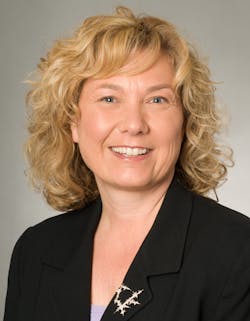Why more FTEs may not solve your staffing stress, but better communication could
Nurse staffing is a perennial issue for hospital leadership. If it were merely an issue of nurse-to-patient ratios, the problem might be easier to solve. Apart from dealing with regional nursing shortages and shrinking hospital margins, evaluating appropriate staffing levels includes the skill mix during each shift, the acuity of current patients, and the tasks assigned to nurses that do not involve direct patient care.
From a frontline nurse’s perspective, one of the main reasons that FRED—Frantically Running Every Day—persists in hospital units is the lack of adequate staff. In two earlier blog posts, I’ve discussed FRED and some of the Nursing Executive Center’s (NEC) recommendations in their report, “Rebuild the Foundation for a Resilient Workforce.” In a 2015 survey of registered nurses (RNs), the NEC found that only 36% of RNs felt that their units had enough staff.1
Yet the NEC report also observed that despite widespread concern about staffing levels, several indicators show that care outcomes have been improving, especially the number and severity of hospital acquired conditions.2 Moreover, in some cases discussed in the NEC report, the addition of full-time nursing staff dedicated to patient care did not have an impact on the perception of staff levels.
Why the disconnect, and what can nurse and healthcare leaders do to address it?
Perceptions of unsafe staffing driven by poor communication and other workplace dynamics
Nurses’ dedication to patient care is an obvious mitigating factor in the relationship between staffing levels and patient outcomes. A 2017 study of acute care nurses3found that many nurses compensated for an imbalance between staffing level and workload by coming in early, staying late, and working through breaks. As discussed in earlier blogs about FRED, this is not a sustainable strategy for a healthy organization.
But workload is only part of the story. When frontline nurses say their workflow model is FRED, they aren’t simply saying they’re busy. To be frantic is to be distracted by anxiety. In my last blog about FRED, I talked about nurses being anxious over workplace violence. In this blog post, I want to talk about the emotional aspects driving nurses’ stress over staffing levels.
Multiple studies from the NEC and elsewhere have discovered that poor communication, workplace dynamics, and individual emotions are a key driver of nurses’ perceptions of inadequate or unsafe staffing levels, such as:
- Concerns about moral/ethical aspects of delays in patient care
- Fear about not being conscientious4
- Feeling that their contributions are not valued5
- Belief that other staff members are not doing their share or being held accountable
- Frequent interruptions6 during work
- Repeated last-minute changes in scheduling
In order to eliminate FRED, healthcare organizations need to address not only staffing numbers but also the other stressors that lead nurses to feel inadequately supported during their shifts.
Communication solutions to healthcare staffing challenges
I’ve talked before on this blog about how a clinical communication and collaboration platform can streamline nursing workloads. While increasing efficiency and productivity is important in busy healthcare environments, the NEC report makes clear that having that extra time for patient care can reduce stress and dissatisfaction about perceived failure to perform adequately.
For example, discharging a hospital patient can require several different tasks that qualify as indirect patient care: Filling out forms, calling transportation and housekeeping, paging the attending physician, communicating with the pharmacy for appropriate medications, acquiring durable medical goods, or coordinating care with a sub-acute provider.
All of these tasks take nurses away from what they see as their primary task: Direct, in-room patient care. With a tool that allows nurses to perform many of those tasks from any location, via any mobile device or workstation, they don’t feel pulled to choose between staying present for a possibly distressed patient and pulling together discharge resources and personnel. Nurses can use a simple interface to communicate essential needs quickly, so patients are less likely to be kept waiting.
The result: The attending nurse presides over a smooth discharge procedure while giving the patient sufficient attention. The nurse feels she’s been conscientious and ethical, and she feels supported by other staff members. Those staff members are able to respond more quickly to notifications using the device most convenient for their location. Without changing staffing numbers, nurses can feel they have what they need to work to the best of their ability.
Smart nurse staffing using healthcare communication tools
I don’t want to imply that all staffing concerns are merely a matter of nurses’ psychological well-being. Nursing shortages are a concern in many areas, and maintaining shift coverage can take up far too much of a nurse supervisor’s time. Nursing communication tools designed to simplify the process of nurse staffing can address many of the issues that create a perception of inadequate staffing levels:
Appropriate skill mix
Filling shifts with the right skill mix is easier using a database that can easily cross-reference by location, certification or license, and cross-training. Nurse supervisors can create pre-set groups for faster notification and build ad hoc groups for notifications in unique circumstances. Having the right mix of people during a shift, rather than just the right number, reduces the perception of unsafe or insufficient staffing.
Minimizing staffing surprises
Accelerating the process of filling shift vacancies reduces last-minute schedule changes. One-touch messaging and trackable responses save time and provide a record of availability. Tracking shift coverage requests also allows nurse staff coordinators to identify patterns and plan for the future. When nurses can plan both their on- and off-duty time reliably, they feel their time, contributions and well-being are respected by their managers and the organization. While unexpected changes will still happen, reducing their frequency assures nurses that full staffing is the standard in their facility.
Reducing vacancies
Keeping the hospital staffed is time consuming. One client reported that prior to using LiveProcess, their staffing coordinators could make up to 50 phone calls a day. Those calls were not always answered, and callbacks were not consistent. Nurses were sometimes frustrated to discover that by the time they called back, the shift was filled. Delays could also lead to overfilling or underfilling a shift. Streamlining shift management through LiveProcess allowed this hospital to rise from 70% average vacancy coverage to 100%. Covering all shift vacancies reduces nurses’ stress and frustration resulting from taking over another staff member’s duties.
Read more blog posts about clinical communication and collaboration.
References
- Ahrq.gov. (2018). 2015 National Healthcare Quality and Disparities Report and 5th Anniversary Update on the National Quality Strategy | Agency for Healthcare Research & Quality. [online] Available at: https://www.ahrq.gov/research/findings/nhqrdr/nhqdr15/index.html [Accessed 31 Jul. 2018].
Ibid - MacPhee, Maura, et al. “The Impact of Heavy Perceived Nurse Workloads on Patient and Nurse Outcomes.” MDPI, Multidisciplinary Digital Publishing Institute, 5 Mar. 2017, www.mdpi.com/2076-3387/7/1/7.
- Louch, Gemma et al., “The daily relationships between staffing, safety perceptions and personality in hospital nursing: A longitudinal on-line diary study.” International Journal of Nursing Studies , Volume 59 , 27 – 37.
- https://www.journalofnursingstudies.com/article/S0020-7489(16)00078-X/fulltext
- ibid
- MacPhee, Maura, et al. “The Impact of Heavy Perceived Nurse Workloads on Patient and Nurse Outcomes.” MDPI, Multidisciplinary Digital Publishing Institute, 5 Mar. 2017, www.mdpi.com/2076-3387/7/1/7.



